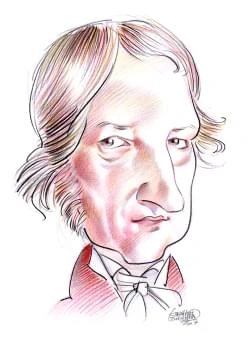760 résultats pour "climatisme"
-
Développement durable
pollutions, la gestion des déchets et de l'eau). En 1997, le protocole de Kyoto fixe des objectifs de réduction des émissions de gaz à effet de serre pour les pays développés, afin de lutter contre le changement climatique. Il n'est pas ratifié par les Etats-Unis. En 2002, Johannesburg accueille un sommet pour le développement durable. En 2009, un sommet sur le climat est organisé à Copenhague. Toutefois, ces rencontres internationales sont critiquées pour leur manque de résultats concrets et le...
-
Définition:
AMBIANCE, substantif féminin.
traumatisante. MARYSE CHOISY, Qu'est-ce que la psychanalyse?, 1950, page 120. ? 6. Les gouverneurs (...) commandaient et administraient dans cette ambiance o? l'on ne doute de rien et qui enveloppe les Fran?ais quand, par hasard, ils sont d'accord pour servir une grande cause. CHARLES DE GAULLE, M?moires de guerre, L'Appel, 1954, page 152. ? 7. Mais un examen attentif r?v?le une myst?rieuse coh?rence, comme si l'univers cr?? par Rubens ob?issait ? des lois secr?tes, aussi rigoureuses que dif...
-
L'Inde et le sous-continent indien
Il se situe dans les chaînes de I'Hindu Kuch et du Karakorum qui séparent le Pakistan respectivement de l'Afghanistan et de la Chine. À l'ouest, la passe de Khyber relie le Pakistan à l'Afghanistan. le centre est dominé par les monts Sulayman et Toba Kakar. Dans le sud-ouest, le Baloutchistan est occupé par un grand plateau aride. LE CLIMAT • Climat continental, peu marqué par la mousson. Dans les plaines, les hivers sont frais et les étés cha...
-
La Forêt-Noire
UNE ZONE DE FAIBLE PEUPLEMENT • Les arbres sont les principaux hôtes de la Forêt-Noire, où les hommes ne sont que des invités, tenus de respecter la nature. Renforcée depuis que la région abrite deux parcs naturels, cette vocation n'a guère été contrariée au cours des siècles, la Forêt-Noire n'ayant jamais été une zone de peuplement, sauf à la périphérie, où se situent les villes, restées d'importance moyenne. • La plaine du Rhin elle-même est p...
-
South America - geography.
B Natural Regions Tierra del Fuego, ArgentinaUshuaia, on Argentina’s island of Tierra del Fuego, is the world’s southernmost city. Argentina claims part of the Tierra del Fuegoarchipelago, including the largest island, known as Tierra del Fuego or Great Island, and Staten Island. Chile claims the remainder ofthe islands in the territory.R. Van Nostrand/Photo Researchers, Inc. Rising abruptly from the northwestern and western coasts of the continent are the Andes. They consist of a single chain...
-
Les États andins
par leurs éruptions, s'abaisse vers des plaines côtières, plus larges au nord du pays. À l'est les basses terres de l'Oriente appartiennent au monde amazonien. CLIMAT ET VÉGÉTATION La ligne équatoriale passe dans le nord du pays. Sur la côte, le climat tropical très humide se fait semi-aride vers le LE RÉSEAU HYDROGRAPHIQUE Les cours d'eau nés dans les Andes arrosent pour les uns la région côtière (Esmeraldas), pour les autres, rejoignent les basses...
-
BIOSPHÈRE
LES BIOMES
GÉNÉRALITÉS
La surface de la Terre n'est pas uniforme, mais
2 régions les plus arides de la Terre. Dans les déserts chauds, les températures diurnes dépassent 38 °C et il ne pleut jamais, car les masses d’air en mouvement ont perdu toute la vapeur d’eau qu’elles contenaient. Les savanes sont des prairies tropicales plus ou moins arides, où des arbres poussent parfois çà et là. Ces étendues herbacées plus ou moins arborées caractérisent les régions tropicales et subtropicales où la température est constamment élevée, et où il existe des variations saison...
-
Greenhouse Effect.
addition, humans cut down huge tracts of trees for lumber or to clear land for farming or building. This process, known as deforestation, can both release the carbonstored in trees and significantly reduce the number of trees available to absorb carbon dioxide. As a result of these human activities, carbon dioxide in the atmosphere is accumulating faster than Earth’s natural processes can absorb the gas. By analyzing airbubbles trapped in glacier ice that is many centuries old, scientists have d...
-
-
Dictionnaire en ligne:
DOUCEUR, substantif féminin.
douceur germanique qui a pénétré dans la physionomie française par l'Alsace et la Lorraine, et cette absence complète d'angles qui rendait les Sicambres si reconnaissables parmi les Romains et qui distingue la race léonine de la race aquiline. VICTOR HUGO, Les Misérables, tome 1, 1862, page 832. d) Domaine du toucher. La douceur de sa peau suave [d'Esther] (HONORÉ DE BALZAC, Spendeurs et misères des courtisanes, 1844, page 53) : Ø 4.... le prix des renards ne peut être fixé; je ne parle pas d...
-
Arctic - Geography.
The Arctic is not a frozen desert devoid of life on land or sea, even during the cold, dark winter months. Spring brings a phenomenal resurgence of plant and animal life.Low temperatures are not always the critical element—moisture, the type of soil, and available solar energy are also extremely important. Some animals adapt well toArctic conditions; for instance, a number of species of mammals and birds carry additional insulation, such as fat, in cold months. Arctic summers with extended dayli...
-
Boisson universelle étonnamment complexe, le vin est connu depuis la préhistoire.
volume 1 États-Unis - traitement des vignes par hélicoptère dans Napa Valley, en Californie, page 1754, volume 4 Hongrie - vignobles de Szigliget, près du lac Balaton, page 2398, volume 5 Italie - les vignobles du Frioul, page 2617, volume 5 vin - cueillette du raisin à la treille, page 5546, volume 10 vin - scène de vendange en octobre, page 5546, volume 10 Les vins et leurs terroirs Après les restructurations consécutives à l'invasion du phylloxéra et à l'avènement des chemins de fer m...
-
L'Asie du Sud-Est
• Situé à l'est du Cambodge, le Viêt Nam s'étend de la Chine au nord à la mer de Chine méridionale au sud. Dans le nord se trouvent à la fois de annamitique, qui culmine à 2 598 m, est bordée par des plaines côtières. Dans l'extrême sud, le delta du Mékong baigne une large plaine. • Le climat du Viêt Nam est de type tropical à mousson, mais la saison des pluies varie selon que l'on se trouve dans le nord du pays (mai à octobre), dans le cent...
-
LE DANEMARK dans les années 1970 (géographie)
Les détroits et les iles Au sud du Kattegat, bras de mer qui sépare le nord du Jutland de la Suède méridionale, l'archipel danois forme une sorte de triangle de terre à l'intérieur duquel s'insinuent les chenaux du Sund, du Grand Belt (largeur minimum 15 km) et du petit Belt (largeur minimum 0,6 km) ce qui permet de distinguer un groupe d'îles occidental, composé de Fionie (2 924 km') et de ses dépendances (Aeroe, Taasinge, Langeland) et un gro...
-
Mars (planet) - astronomy.
The Martian core is probably much like Earth’s, consisting mostly of iron, with a small amount of nickel. If other light elements, particularly sulfur, exist there as well, thecore may be larger than presently thought. From studying Earth’s magnetic field and core, scientists theorize that the motions of the liquid rock in Earth’s core generateits magnetic field. Mars does not have a significant magnetic field, so scientists believe that Mars’s core is probably solid. However, spacecraft data in...
-
Connecticut - geography.
The state’s shoreline, when all the bays and inlets are taken into account, has a total length of 995 km (618 mi). The coastline is deeply indented by long estuaries androcky inlets, and there are many sandy beaches and stretches of tidal marsh. There are several good harbors along the coast, the most important of which is at NewHaven. A few small islands lie offshore in Long Island Sound. D Climate Connecticut has long, hot summers and cold winters. The climate does not vary greatly from place...
-
Connecticut - USA History.
The state’s shoreline, when all the bays and inlets are taken into account, has a total length of 995 km (618 mi). The coastline is deeply indented by long estuaries androcky inlets, and there are many sandy beaches and stretches of tidal marsh. There are several good harbors along the coast, the most important of which is at NewHaven. A few small islands lie offshore in Long Island Sound. D Climate Connecticut has long, hot summers and cold winters. The climate does not vary greatly from place...
-
-
Nebraska - geography.
by natural resource districts to limit the rate of pumping for irrigation. C Climate Nebraska has a typical continental climate with wide seasonal variations in temperature. C1 Temperature Winter temperatures below -20°C (0° F) and summer temperatures in the upper 30°s C (lower 100°s F) are common. The average January temperature varies from about -7° C (about 20° F) in the northeast to about -2° C (about 29° F) in the southwest. The average for July, thehottest month, ranges from about 26° C...
-
Nebraska - USA History.
by natural resource districts to limit the rate of pumping for irrigation. C Climate Nebraska has a typical continental climate with wide seasonal variations in temperature. C1 Temperature Winter temperatures below -20°C (0° F) and summer temperatures in the upper 30°s C (lower 100°s F) are common. The average January temperature varies from about -7° C (about 20° F) in the northeast to about -2° C (about 29° F) in the southwest. The average for July, thehottest month, ranges from about 26° C...
-
Colorado - geography.
Although the rivers of Colorado are navigable only by small boats, they are important as a source of irrigation water for use in Colorado and adjoining states. However,the water level of the rivers fluctuates seasonally and from year to year. The level is generally low in winter and high in spring and summer, during the runoff of meltedsnow from the mountains. Colorado has no large lakes of natural origin, but there are numerous small lakes in the mountains. The largest bodies of water in Colora...
-
Colorado - USA History.
Although the rivers of Colorado are navigable only by small boats, they are important as a source of irrigation water for use in Colorado and adjoining states. However,the water level of the rivers fluctuates seasonally and from year to year. The level is generally low in winter and high in spring and summer, during the runoff of meltedsnow from the mountains. Colorado has no large lakes of natural origin, but there are numerous small lakes in the mountains. The largest bodies of water in Colora...
-
Massachusetts - geography.
mi). Other large artificial lakes include Wachusett Reservoir, East Brimfield Reservoir, and Cobble Mountain Reservoir. Assawompsett Pond, covering about 10 sq km(about 4 sq mi), is the largest natural lake. North Watuppa Pond and Long Pond are other large natural lakes. Lake Chaubunagungamaug, near Webster, is usuallycalled Webster Lake, because the Algonquian name is difficult to pronounce and spell. The full version of the Native American name is said to be the longest place-namein North Amer...
-
Louisiana - geography.
lakes are on the Red River and its tributaries. In addition, small oxbow lakes are numerous in the Mississippi Alluvial Plain. Oxbow lakes are formed when a river cutsthrough the neck of one of its loops, or meanders, thus establishing a shorter course and leaving the former loop as a lake separate from the river. Louisiana also hassome artificially created reservoirs. C Coastline Louisiana’s long and irregular coastline extends along the Gulf of Mexico from the Pearl River on the east to the S...
-
Louisiana - USA History.
lakes are on the Red River and its tributaries. In addition, small oxbow lakes are numerous in the Mississippi Alluvial Plain. Oxbow lakes are formed when a river cutsthrough the neck of one of its loops, or meanders, thus establishing a shorter course and leaving the former loop as a lake separate from the river. Louisiana also hassome artificially created reservoirs. C Coastline Louisiana’s long and irregular coastline extends along the Gulf of Mexico from the Pearl River on the east to the S...
-
Kansas - geography.
at the adjoining cities of Kansas City, Kansas, and Kansas City, Missouri. Its chief headstreams are the Republican and Smoky Hill rivers, which join to form the KansasRiver at Junction City. Each of the headstreams has numerous tributaries. The Kansas River proper is only 270 km (170 mi) long, but the Smoky Hill River has a lengthof 870 km (540 mi), and the Republican River has a length of 720 km (450 mi). The main tributary flowing into the Kansas River is the Big Blue River. The Arkansas Rive...
-
-
Kansas - USA History.
at the adjoining cities of Kansas City, Kansas, and Kansas City, Missouri. Its chief headstreams are the Republican and Smoky Hill rivers, which join to form the KansasRiver at Junction City. Each of the headstreams has numerous tributaries. The Kansas River proper is only 270 km (170 mi) long, but the Smoky Hill River has a lengthof 870 km (540 mi), and the Republican River has a length of 720 km (450 mi). The main tributary flowing into the Kansas River is the Big Blue River. The Arkansas Rive...
-
Minnesota - geography.
C Climate Minnesota’s climate is classified as humid continental because normally there is a sufficient amount of precipitation to provide at least some surplus for runoff, andbecause Minnesota’s temperature conditions are largely controlled by its location in the interior of the large landmass of North America. The result is extreme seasonaltemperature variations. The average January temperature is about -18°C (about 0°F) in the northwest and about -10°C (about 14°F) in the south, but thetherm...
-
Minnesota - USA History.
C Climate Minnesota’s climate is classified as humid continental because normally there is a sufficient amount of precipitation to provide at least some surplus for runoff, andbecause Minnesota’s temperature conditions are largely controlled by its location in the interior of the large landmass of North America. The result is extreme seasonaltemperature variations. The average January temperature is about -18°C (about 0°F) in the northwest and about -10°C (about 14°F) in the south, but thetherm...
-
Israel (country) - country.
harbor in the northern part of the country, and Ashdod, an artificial deepwater port to the south, serve as the main seaports on the Mediterranean. The port of Elat onthe Gulf of Aqaba provides Israel’s only access to the Red Sea, making it extremely important to the country’s shipping interests. D Natural Resources Although much of Israel’s desert regions contain poor soils, the northern Negev, the coastal plains, and the interior valleys provide patches of productive soils. Anestimated 18 per...
-
Missouri - geography.
Saint Francois Mountains, at the eastern end of the crest of the dome. Only in these mountains have the sedimentary rocks been sufficiently eroded away so that theunderlying igneous rocks are exposed. They form the rounded, knoblike peaks of an old mountain range. The peaks project, in isolation or in clusters, between 230 and300 m (750 and 1,000 ft) above the surrounding sedimentary basins. One of these knobs, Taum Sauk Mountain, reaches 540 m (1,772 ft) above sea level and is thehighest point...
-
Missouri - USA History.
Saint Francois Mountains, at the eastern end of the crest of the dome. Only in these mountains have the sedimentary rocks been sufficiently eroded away so that theunderlying igneous rocks are exposed. They form the rounded, knoblike peaks of an old mountain range. The peaks project, in isolation or in clusters, between 230 and300 m (750 and 1,000 ft) above the surrounding sedimentary basins. One of these knobs, Taum Sauk Mountain, reaches 540 m (1,772 ft) above sea level and is thehighest point...
-
Native Americans of North America.
addition to smallpox and measles, explorers and colonists brought a host of other diseases: bubonic plague, cholera, typhoid fever, scarlet fever, pleurisy, mumps,diphtheria, pneumonia, whooping cough, malaria, yellow fever, and various sexually transmitted infections. Despite the undisputed devastation wreaked on Indian populations after European contact, native populations showed enormous regional variability in their response todisease exposure. Some peoples survived and, in some cases, even...
-
Native Americans of North America - Canadian History.
addition to smallpox and measles, explorers and colonists brought a host of other diseases: bubonic plague, cholera, typhoid fever, scarlet fever, pleurisy, mumps,diphtheria, pneumonia, whooping cough, malaria, yellow fever, and various sexually transmitted infections. Despite the undisputed devastation wreaked on Indian populations after European contact, native populations showed enormous regional variability in their response todisease exposure. Some peoples survived and, in some cases, even...
-
-
Canada.
Six general landform regions are distinguishable in Canada: the Appalachian Region, the Great Lakes and St. Lawrence Lowlands, the Canadian Shield, the Great Plains,the Canadian Cordillera, and the Canadian Arctic Archipelago. B1 Appalachian Region and Great Lakes and St. Lawrence Lowlands Eastern Canada consists of the Appalachian Region and the Great Lakes and St. Lawrence Lowlands. The Appalachian Region embraces Newfoundland Island, NovaScotia, New Brunswick, Prince Edward Island, and the G...
-
Canada - country.
Six general landform regions are distinguishable in Canada: the Appalachian Region, the Great Lakes and St. Lawrence Lowlands, the Canadian Shield, the Great Plains,the Canadian Cordillera, and the Canadian Arctic Archipelago. B1 Appalachian Region and Great Lakes and St. Lawrence Lowlands Eastern Canada consists of the Appalachian Region and the Great Lakes and St. Lawrence Lowlands. The Appalachian Region embraces Newfoundland Island, NovaScotia, New Brunswick, Prince Edward Island, and the G...
-
Canada - Canadian History.
Six general landform regions are distinguishable in Canada: the Appalachian Region, the Great Lakes and St. Lawrence Lowlands, the Canadian Shield, the Great Plains,the Canadian Cordillera, and the Canadian Arctic Archipelago. B1 Appalachian Region and Great Lakes and St. Lawrence Lowlands Eastern Canada consists of the Appalachian Region and the Great Lakes and St. Lawrence Lowlands. The Appalachian Region embraces Newfoundland Island, NovaScotia, New Brunswick, Prince Edward Island, and the G...
-
China - country.
North China lies between the Mongolian Steppe on the north and the Yangtze River Basin on the south. It stretches west from the Bo Hai gulf and the Yellow Sea to theeastern edge of the Tibetan Plateau. Administratively, North China includes Beijing and Tianjin municipalities; Shandong and Shanxi provinces; most of Hebei, Henan,and Shaanxi provinces; and portions of Ningxia Hui Autonomous Region and of Jiangsu, Anhui, and Gansu provinces. Humans have lived in the agriculturally rich region of Nor...
-
France - country.
In both the Paris and Aquitaine basins, fertile soils derived from limestone and wind-deposited dust, called loess, have supported prosperous agriculture since ancienttimes. Other lowlands in France are scattered and relatively small. They include the Alsace Plain in the east, bordering Germany, the valley of the Rhône River in thesoutheast, and the Languedoc Plain along the Mediterranean coast. A2 Uplands France contains several regions of uplands, the worn down remains of ancient mountain sys...
-
Himalayas - geography.
result of deforestation the habitat of most of the wildlife has been destroyed. They are now restricted to special protected areas such as the Jaldapara and Kazirangasanctuaries in India ( see Kaziranga National Park) and the Chitawan preserve in Nepal. There are few animals in the Middle Himalayas because of extensive deforestation. In the Great Himalayas musk deer, wild goats, sheep, wolves, and snow leopards are found. The existence of the Abominable Snowman or Yeti has beenreported by highla...
-
Nicaragua (1995-1996)
Les élections générales fixées au 20 octobre 1996 ont dominé l'agenda politique
du pays, tandis que le climat...
Nicaragua (1995-1996) Les élections générales fixées au 20 octobre 1996 ont dominé l'agenda politique du pays, tandis que le climat social, comme partout dans la région, demeurait très dégradé. Six ans après la défaite historique des sandinistes (au pouvoir depuis la révolution de 1979 qui avait mis fin à la dictature de la famille Somoza), les élections de 1996 devaient confirmer la normalisation de la vie politique nicaraguayenne. Afin que le processus ne souffre aucune contestation, un nouve...
-
La Polynésie française
sert de toile de fond au lagon, vu de Papeete. Elle est située à 17 km à peine, que de nombreux ferries franchissent quotidiennement pour transporter des touristes et surtout des travailleurs employés à Tahiti. Du pont de ces bateaux, on devine la profondeur qui atteint vite 3 000 m. • Le relief escarpé de Moorea est ouvert par les deux baies symétriques de Cook (à l'est) et d'Opunohu (à l'ouest), que l'on peut admirer depuis le Belvédère perché...
-
-
Suisse.
de la faune des montagnes figurent la marmotte des Alpes, le chamois et le bouquetin. L’ours brun qui, exterminé par la chasse, était absent des Alpes suisses depuis 1904,a fait sa réapparition en 2004 ; il est représenté par quelques individus isolés venus d’Italie et d’Autriche. Le loup, qui avait disparu au XIXe siècle, fait lui aussi, depuis le début des années 2000, des incursions sporadiques, depuis l’Italie et la France. Les lacs et rivières suisses abritent environ 70 espèces de poisson...
-
Spain - country.
B Natural Resources Spain has a number of mineral resources. The largest known deposits are of iron ore, zinc, and lead. Spain also produces significant quantities of copper and mercury.These deposits are mined mainly in Huelva province in southwestern Spain, around Cartagena on the Mediterranean, and at various points along the Bay of Biscay inthe north. Additionally, uranium is mined in the region of Extremadura, near the Portuguese frontier, where pyrites, fluorspar, gypsum, tungsten, and po...
-
Composante essentielle de notre patrimoine naturel, la forêt occupe 32 % des terres
émergées de la planète.
conifères feuillu formation végétale fougère futaie maquis - 1.GÉOGRAPHIE La faune. De nombreuses espèces animales colonisent les forêts ; on peut en dénombrer jusqu'à 7 000 dans une forêt de chênes. Tous les grands prédateurs ayant été éradiqués des forêts françaises, les plus grands animaux aujourd'hui sont les cervidés (cerf, daim, chevreuil) et les sangliers. Des opérations de réintroduction de prédateurs, comme celle du lynx dans les Vosges, tentent de reconstituer l'équilibre écolog...
-
Evolution - biology.
genetic diversity to extinction. Sexual reproduction ensures that the genes in a population are rearranged in each generation, a process termed recombination. Although the combinations of genes inindividuals change with each new generation, the gene frequency, or ratio of different alleles in the entire population, remains relatively constant if no evolutionaryforces act on the population. One such force is the introduction of new genes into the genetic material of the population, or gene pool...
-
Japan - country.
island’s fertile soils support agriculture and provide the vast majority of Japan’s pasturelands. In addition, Hokkaidō contains coal deposits, and the cold currents off itsshores supply cold-water fish. Winters are long and harsh, so most of Hokkaid ō is lightly settled, housing about 5 percent of Japan’s population on approximately 20 percent of its land area. However,its snowy winters and unspoiled natural beauty attract many skiers and tourists. Hokkaid ō is thought of as Japan’s northern fr...
-
Native American Architecture.
B Relationship to the Universe and Nature A more profound difference between European American and Native American perceptions lay in how human beings saw themselves in relationship to the universe andin what they believed their responsibilities were to the natural world and to each other. Most European Americans saw themselves as separate from creation andadversaries of nature, ever struggling to conquer and subdue nature and force it to yield to their will. Native Americans saw themselves as...
-
Economie de l'environnement cours
l'épuisement des ressources naturelles. - La taxe carbone - c'est la question de la fiscalité écologique, une politique économique avisée environnementale. Ce sont des mesures proposées par les économistes pour résoudre les problèmes environnementaux. - Le réchauffement climatique - problème environnemental typique, ce sont des phénomènes globaux, systémiques. Ils concernent l'ensemble de la planète. Il n'y a aucune frontière pour l'environnement, on ne peut pas lutter tout seul. - Les con...
-
Arctique
L’Arctique est un territoire aux conditions extrême qui possède beaucoup de ressources naturelles. L'Arctique qui abrite plus de 21.000 espèces animales ou végétales connues est une des dernières vastes régions mondiales restées à l'état sauvage. La préservation de la biodiversité est toutefois mise en danger par le développement des activités humaines. La fonte accélérée de la banquise ouvre de nouveaux passages maritimes, amenés à jouer un rôle croissant dans les échanges internatio...
-
-
Sibérie.
4.2 Sibérie orientale D’une superficie de plus de 4 millions de km 2, avec une population très réduite (environ 9 millions d’habitants), la Sibérie orientale est couverte aux trois quarts par la forêt. Les bas plateaux autour du bassin de l’Ienisseï sont remplacés au sud par des montagnes de part et d’autre du lac Baïkal (monts Saïan, monts Iablonovyï, monts Stanovoï).Le développement économique se limite à l’exploitation des ressources naturelles (gisements de minerais, barrages hydroélectriqu...
-
La Vanoise : vers une gestion durable de la haute montagne
au dévelo ppement de ce tourisme, et la pénétration facile grâce aux grandes vallées permet aussi un accès simple à ces massifs. Un grand nombre de stations de sport d’hiver se trouvent dans la zone d’adhésion du parc national : Champagny en fait partie (à environ 1 500 m du parc). L’aménagement touristique de la montagne, qui prend naissance à la fin des années 1950, entraîne des modifications des milieux montagnards (bétonisation,...
}})








